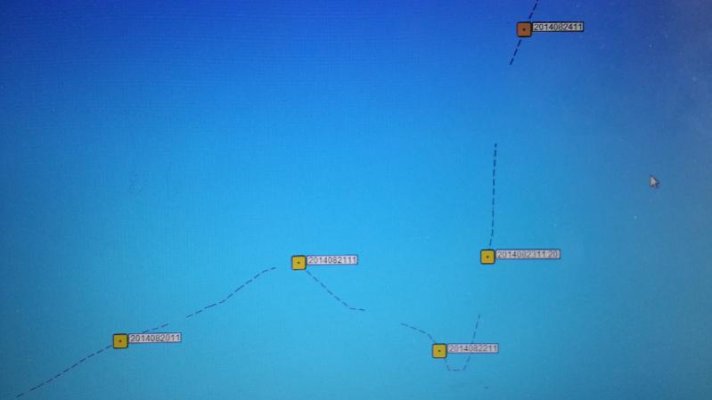A wacky series of decisions
Here is the logic as I thought it at the time.
I made some really strange (stupid) decisions that I would really suffer for a week later. The day, 07:00, had started with strong NE winds at 20 knots. I did not want to travel into those winds as the boat goes very slowly, like half speed and the pitching of the bow becomes like a bucking bronco. One lesson I’ve learned about ocean travel is that since you don’t have to worry about running onto shore, you can go any direction, but in a boat that travels 6 knots normally, it’s fruitless to go into strong winds.
So therefore, I made a decision to go NW! Which would have put me in Greenland in two weeks.
Even now, I don’t know what I was thinking. But an hour later I correct the mistake and turn SE. Now, SE would put me in North Africa in a week. But, remember, I did not want to go NE because of the winds. This little escapade cost me three hours, as I crossed the spot I was the hours earlier. I was so irrigated at myself that I did not realize for a full day that I was compounding this error tenfold!


The winds stayed at 20 knots out of the NNE all day. I continued to motor SE towards Africa. Had I not been alone, someone, anyone, on the scene would have asked, what our goal was and as soon as I answered that question, I would have seen the folly of my ways.
Decision making is the biggest casualty of single handing.
Day 5, 22 August
Winds continued all day from the NE, finally becoming easterly by evening and weakening to 15 knots. I keep my course of ESE now aiming for Gibraltar. I understand some of my logic, I was determined to stay on the east side of any low pressure area. The east side would mean Southeasterly winds, which I wanted.
I spent much of this day experimenting with course and speed, to find the best way to mitigate the wind coming directly from the direction I wanted to go. It was slow, 3 knots, but at least I wasn't wasting fuel and I wasn't getting further away from my destination. I spent three hours going due east, and had a very easy ride with 6 ft. waves coming from the NE.
Finally, after a full day and a half, 34 hours after my first harebrained course change, I changed course to due NNE, into the winds, but really slow, at low rpms, 1000 to 1050 rpms. The ride wasn't bad, the roll was minor and I was going in a direction that I needed to go. (this turned out to be a great lesson learned, as to how best to cope with winds and seas on the bow, if you must go that direction)
KK should put out a little cheat sheet.
Day 6, 23 August
I kept rpm’s low, 1300 to 1400, winds were easterly, but veering (the direction they were coming from moving clockwise) as the day continued. They stayed strong at 20 knots. Barometric pressure remained steady or still rising a bit at 1019mb. I continued on an almost due north course at 1500 rpms all day.
I was disgusted looking at my track and seeing that I was only 150 nm from my position on the 21st at 7:00 a.m., that’s two and a half days ago, I was pissed. If I wanted to make progress like that, I’d have a sail boat! I could have put the boat at idle, kept the course NE and I would have save a whole bunch of fuel, time and aggravation.
I’ll spend the next 24 hours being irritated at every glance at my navigation program seeing this track that did nothing other than waste time, money, fuel. Thankfully, what I didn’t know was that by adding 36 hours to this passage, I was setting myself up for a ride of the ride of a life time.







 ) keeping all the plates spinning on sticks and not allowing any one to fall is asking an awful lot of one's self
) keeping all the plates spinning on sticks and not allowing any one to fall is asking an awful lot of one's self